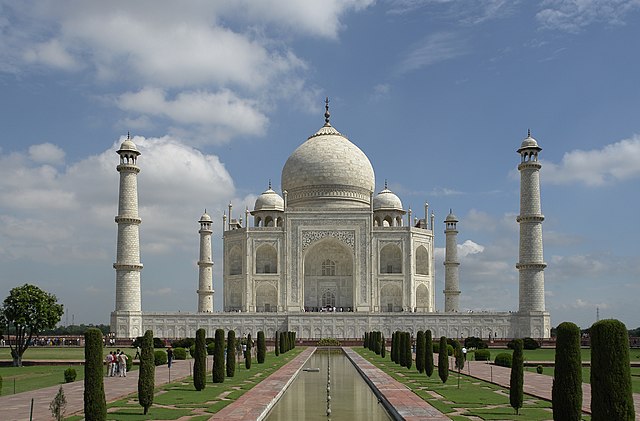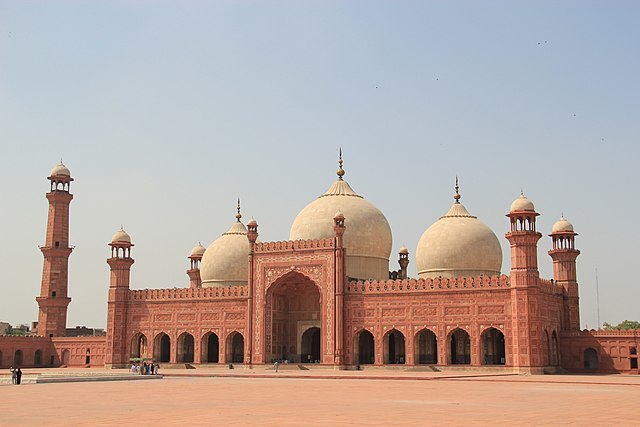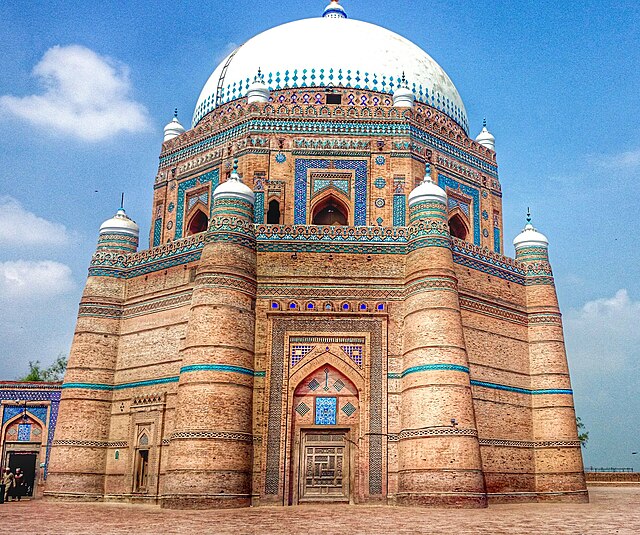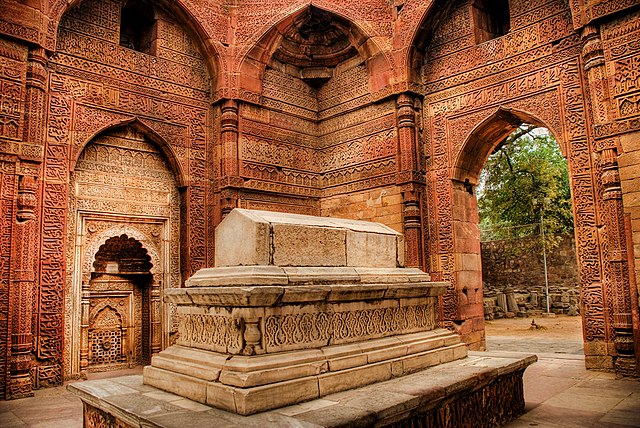Mughal architecture is the type of Indo-Islamic architecture developed by the Mughals in the 16th, 17th and 18th centuries throughout the ever-changing extent of their empire in the Indian subcontinent. It developed from the architectural styles of earlier Muslim dynasties in India and from Iranian and Central Asian architectural traditions, particularly Timurid architecture. It also further incorporated and syncretized influences from wider Indian architecture, especially during the reign of Akbar. Mughal buildings have a uniform pattern of structure and character, including large bulbous domes, slender minarets at the corners, massive halls, large vaulted gateways, and delicate ornamentation; examples of the style can be found in modern-day Afghanistan, Bangladesh, India and Pakistan.
The Taj Mahal at Agra, Uttar Pradesh, India, is the most famous example of Mughal Architecture and one of India's most recognisable landmarks in general
Badshahi Mosque, in Lahore, Pakistan, is the last and largest imperial mosque built by the Mughals
The use of elephant-shaped column brackets at Lahore Fort reflects Hindu influences on Mughal Architecture during the reign of Akbar.
Humayun's Tomb, with exterior iwans, four-centred pointed arches, and a central bulbous dome visible
Indo-Islamic architecture
Indo-Islamic architecture is the architecture of the Indian subcontinent produced by and for Islamic patrons and purposes. Despite an initial Arab presence in Sindh, the development of Indo-Islamic architecture began in earnest with the establishment of Delhi as the capital of the Ghurid dynasty in 1193. Succeeding the Ghurids was the Delhi Sultanate, a series of Central Asian dynasties that consolidated much of North, East, and Central India, and later by the Mughal Empire during the early 16th century. Both of these dynasties introduced Islamic architecture and art styles from West Asia into the Indian subcontinent.
Tomb of Shah Rukn-e-Alam (built 1320 to 1324) in Multan, Pakistan
The Buland Darwaza gateway to Fatehpur Sikri, built by Akbar in 1601
The Qutb Minar (left, begun c. 1200) next to the Alai Darwaza gatehouse (1311); Qutb Complex in Delhi
Mausoleum of Iltutmish, Delhi, by 1236, with corbel arches








